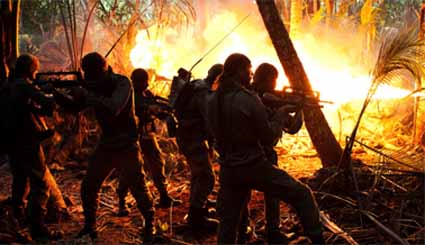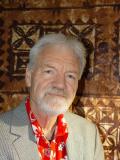REVIEW: The 1988 Ouvéa massacre triggered a series of events that led to the Matignon Accord to open the door to self-government and self-determination in New Caledonia and hope for a Kanak future. But it also led to the assassination of key pro-independence leaders Jean-Marie Tjibaou and his deputy Yéiwene Yéiwene a year later at a ceremony marking the anniversary of the martyrs. David Robie reviews the impact of a new film about the Ouvéa tragedy.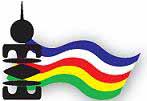
When the headlines hit France in April 1988 about the latest saga in “les évènements” down under in New Caledonia, filmmaker Mathieu Kassovitz was just 18. He remembers the gritty images of the Gossanna cave siege on television.
Indigenous Kanaks had massacred a quartet of gendarmes with machetes and shotguns and taken others hostage.
There were also false reports of alleged decapitations and rape on Ouvéa in the remote Loyalty Islands.
But 13 years ago, Kassovitz’s father handed him the League of Human Rights report on the cave siege and he read the chilling real story for the first time.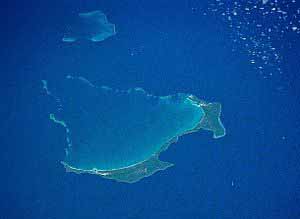 A French military force of some 300 had been deployed in a retaliatory “invasion” of the island and the report detailed atrocities and summary executions that had left 19 Kanak hostage-takers dead in a dawn assault on 5 May 1988.
A French military force of some 300 had been deployed in a retaliatory “invasion” of the island and the report detailed atrocities and summary executions that had left 19 Kanak hostage-takers dead in a dawn assault on 5 May 1988.
Kassovitz (La Haîne and Café au Lait) noted then how an elite police counter-terrorism unit negotiator, Captain Philippe Legorjus of the CIGN, was a central character in the disturbing story.
“I knew then there was the material for a wonderful movie and the script was virtually written,” Kassovitz recalled in a Femail interview. “The dramatic structure was in the report of those 10 days.”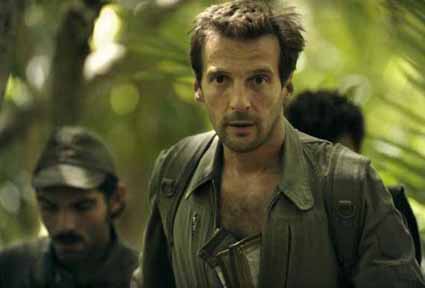 Many obstacles
Many obstacles
On his first trip to Ouvéa to explore the possibility of making the movie, it seemed many obstacles could block getting such a project off the ground.
“Ten years had passed but people were still withdrawn into their grief. The subject was tabu. There had been no closure,” he says.
“There was a lot of religious and political in-fighting within the Kanak community.”
A decade on and 25 film scripts later, against all the odds and being forced to make the film on the French Polynesian island of Anaa instead of Ouvéa, a courageous 136min testimony to the Kanak struggle and search for justice has been finally achieved.
The film was released in France last November with the title L’Ordre et La Morale – a play on words from the title of the Legorjus autobiography, La Morale et l’Action, and on a statement by the hated Minister of Overseas Territories Bernard Pons who said rather cynically: “Sometimes some deaths are necessary to uphold order and morality.”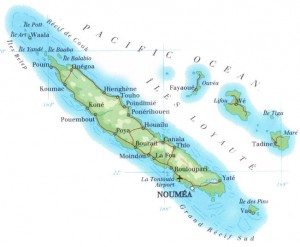 Last night the gripping docudrama was screened for the first time at the New Zealand International Film Festival – under the English-language title Rebellion, which loses the nuances of the French name.
Last night the gripping docudrama was screened for the first time at the New Zealand International Film Festival – under the English-language title Rebellion, which loses the nuances of the French name.
But the film was never shown in New Caledonia on general release in the largest cinema chain. The Pacific territory's French operator refused to screen it.
Smaller cinemas played the film to packed audiences, both Kanak and French.
Inspirational performances
The movie succeeds with the inspirational and credible performances of both director Kassovitz as the frustrated but professional lead character Legorjus – who tried hard to seek a peaceful solution to the hostage crisis – and the Kanak pro-independence militant leader Alphonse Dianou, played superbly by his cousin Iabe Lapacas, aged only six at the time of the tragedy.
Negotiator Legorjus – who is also taken captive – and Dianou ironically form a trusting bond of fraternity and understanding and the French officer is released in a bid to broker a deal.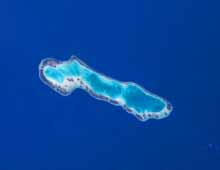 But tension builds as the film covers the 10 days of negotiations until the expediency of the power struggle between rightwing Prime Minister Jacques Chirac and socialist President François Mitterrand in Paris over the imminent outcome of the presidential elections takes over. Mitterrand calls for negotiations – but in reality orders the full catastrophe assault on the cave to free the hostages.
But tension builds as the film covers the 10 days of negotiations until the expediency of the power struggle between rightwing Prime Minister Jacques Chirac and socialist President François Mitterrand in Paris over the imminent outcome of the presidential elections takes over. Mitterrand calls for negotiations – but in reality orders the full catastrophe assault on the cave to free the hostages.
He wins the election.
Legorjus feels betrayed and subsequently resigns from the elite force after the assault. Dianou feels betrayed and is horrendously allowed to die from his wounds from the cave firefight.
Other Kanak prisoners were simply killed in cold blood.
And the Kanak community feel betrayed by both Legorjus and the pro-independence FLNKS. This sense of betrayal ultimately led to the assassination of charismatic FLNKS leader Jean-Marie Tjibaou and his deputy Yéiwene Yéiwene a year later in a ceremony marking the anniversary of the martyrs.
History lesson
Pastor Djubelly Wea, whose character features in the film giving Legorjus a Kanak history lesson while manacled to a coconut tree, was the assassin. He never forgave the FLNKS leadership for failing to negotiate on their behalf. (Although the FLNKS villain portrayed in the film is Franck Wahuzue).
Wea (played by relative Macki Wea) in turn was gunned down by Tjibaou’s bodyguard.
Having reported on the Kanak independence struggle for several years, watching Rebellion was an emotional rollercoaster for me. (In fact, I shared a hotel room in Manila at a “peace brigade” conference with Wea just months before the assassination).
Gossanna cave was tabu – and the film portrays traditional “custom” and beliefs very evocatively. In Kanak tradition, a promise made face-to-face is never broken.
I don’t believe the militants ever intended to harm their captives – they were simply negotiating leverage after things went wrong in the Fayaoué hostage-taking. In fact, as portrayed in the film, the hostages were about to be freed anyway.
At the time, I wrote the following in my book Blood on their Banner – the "blood" being that symbolised by the Kanak flag as being shed by the martyrs of more than a century of French rule: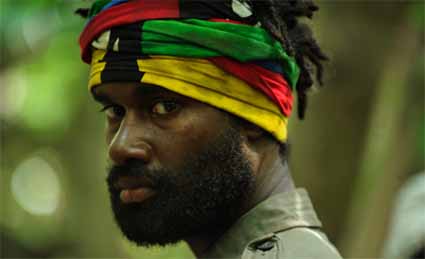
Mounting tension as the French security forces were built up in New Caledonia to 9500 for the elections finally erupted on Friday, 22 April 1988, two days before the poll. Kanak militants, arguably the first real guerrilla force in the territory, seized a heavily armed Fayaoué gendarme post on Ouvéa, in the Loyalty Islands.
Armed with machetes, axes and a handful of sporting guns hidden under their clothes, they killed four gendarmes who resisted, wounded five others and seized 27 as hostages.
They abducted most of their prisoners to a three-tiered caved in rugged bush country near Gossanah in the north-east of the island; the rest were taken to Mouli in the south.
As almost 300 gendarmes flown to Ouvéa searched for them, the militants demanded that the regional elections be abandoned and that a mediator be flown from France to negotiate for a real referendum on self-determination under United Nations supervision. They threatened to kill their hostages if their demands were not met.
Declaring on Radio Djiido that he was dismayed by the attack, Tjibaou blamed it on the “politics of violence” adopted by the Chirac government against the Kanak people.
“The [colonial] plunderers refuse to recognise their subversive lead,” he said. “From the moment they stole our country, they have tried to eliminate everybody who denounces their evil deeds. It has been like that since colonialism began.”
Appeal for calm
Mitterrand appealed for calm and a halt to spiral of violence; Chirac condemned the “savage brutality” of the attack, claiming the guerrillas were “probably full of drugs and alcohol”.
The guerrillas freed 11 hostages but remained hidden in their Wadrilla cache with the others. Another hostage, who was ill, was later released.
Pons portrayed the guerrilla leader, Alphonse Dianou, as a “Libyan-trained religious fanatic”.In fact, he had trained at a Roman Catholic seminary in Fiji and was regarded by people who knew him as “a reflective man, found of books and non-violent”. He spent hours explaining to his captives why they had been seized.
At dawn on Thursday, May 5, French military and special forces launched their attack on the Ouvéa cave and killed 19 Kanaks in what was reported by the authorities to be a fierce battle. The hostages were freed for the loss of only two French soldiers.
If the military authorities were to be believed, their casualties were from the 11th Shock Unit of the DGSE. (This unit was formerly the Service Action squad, used to bomb the Rainbow Warrior in Auckland Harbour on 10 July 1985).
The assault came just three days before the crucial presidential vote, and hours after three French hostages had been freed in Lebanon following the Chirac government’s reported payment of a massive ransom.
To top it off, convicted Rainbow Warrior bomber Dominique Prieur, now pregnant, was repatriated back from Hao Atoll to France.
Massacre ‘engineered’
Leaders of the [pro-independence] FLNKS immediately challenged the official version of the attack. Léopold Jorédie issued a statement in which he questioned how the “Ouvéa massacre left 19 dead among the nationalists and no one injured” and the absence of bullet marks on the trees and empty cartridges on the ground at the site”.
Yéiwene Yéiwene insisted that at no time did the kidnappers intend to kill the hostages – “this whole massacre was engineered by Bernard Pons who knew very well there was never any question of killing the hostages”. Nidoish Naisseline also condemned the action:
“Pons and Chirac have behaved like assassins. I accuse them of murder. They could have avoided the butchery. They preferred to buy votes of [National Front leader] Le Pen’s friends with Kanak blood.”
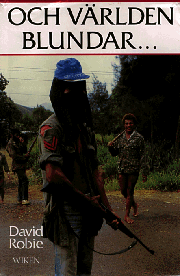 No acting experience
No acting experience
Many of the 40 Kanaks in the film had no prior acting experience, but they are convincing in their roles because they speak from the heart. (Many are actually extended family members). On the other side, many of the French officers and soldiers also had limited acting experience. They were chosen for their military experience.
Kassovitz found it extremely difficult to cast a suitable actor for the role of Dianou: “I think there are only five Kanak actors listed in mainland France, and four of those were the wrong age.”
In the end the filmmaker opted for a 28-year-old Kanak law student and community broadcaster living at Clermont-Ferrand in metropolitan France.
Iabe Lapacas recalls being impressed with the script when he first read it. But taking on an acting role like this is a tough and complicated assignment, especially culturally and politically for a younger man like him.
“We don’t take an individual approach,” he explained in an interview with Femail. “We have a place in the family that must be respected, and my place – as I’m not married – is as a child. So I had to ask my parent’s permission. I wouldn’t have made the movie without it.”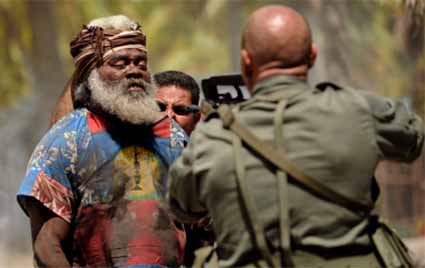 One of the pleasing aspects about the film from a Kanak perspective is that this period of Kanak history through the mid and late 1980s – known as “les évènements” – has finally been told.
One of the pleasing aspects about the film from a Kanak perspective is that this period of Kanak history through the mid and late 1980s – known as “les évènements” – has finally been told.
“One of the conditions of the 1988 Matignon Accord was the amnesty that everybody on both sides wanted, including both the loyalists and indépèndantistes back home,” Lapacas recalls.
‘Memory loss’
“Trouble is, ‘amnesty’ is derived from the same Greek word as “amnesia”. Choosing an amnesty to avoid legal proceedings also resulted in memory loss.
“This film isn’t about taking sides. It simply tells the storybook events that happened but don’t feature in textbooks and aren’t taught in schools.
“Talking about this story means also talking about our history.”
Dr David Robie is director of the Pacific Media Centre and author of Blood on their Banner: Nationalist Struggles in the South Pacific (Zed Books, London, 1989).
This work is licensed under a Creative Commons Attribution-NonCommercial 3.0 New Zealand Licence.
CLOSE TO CIVIL WAR
Many young New Caledonians are not aware of what occurred in their island-country between 1984 and 1988 -“les évènements” . While some have an understanding of the severity of what happened, many others have not been taught their history or how close New Caledonia came to an outright civil war during the 1980s. This was one of the most tragic periods in Pacific history.
A self-determination referendum is due to be held by the Congress of New Caledonia between May 2014 and May 2018, passed by a majority of three-fifths . If the vote does not take place during this period, the French Republic will hold it between May 2018 and May 2019.
More information



